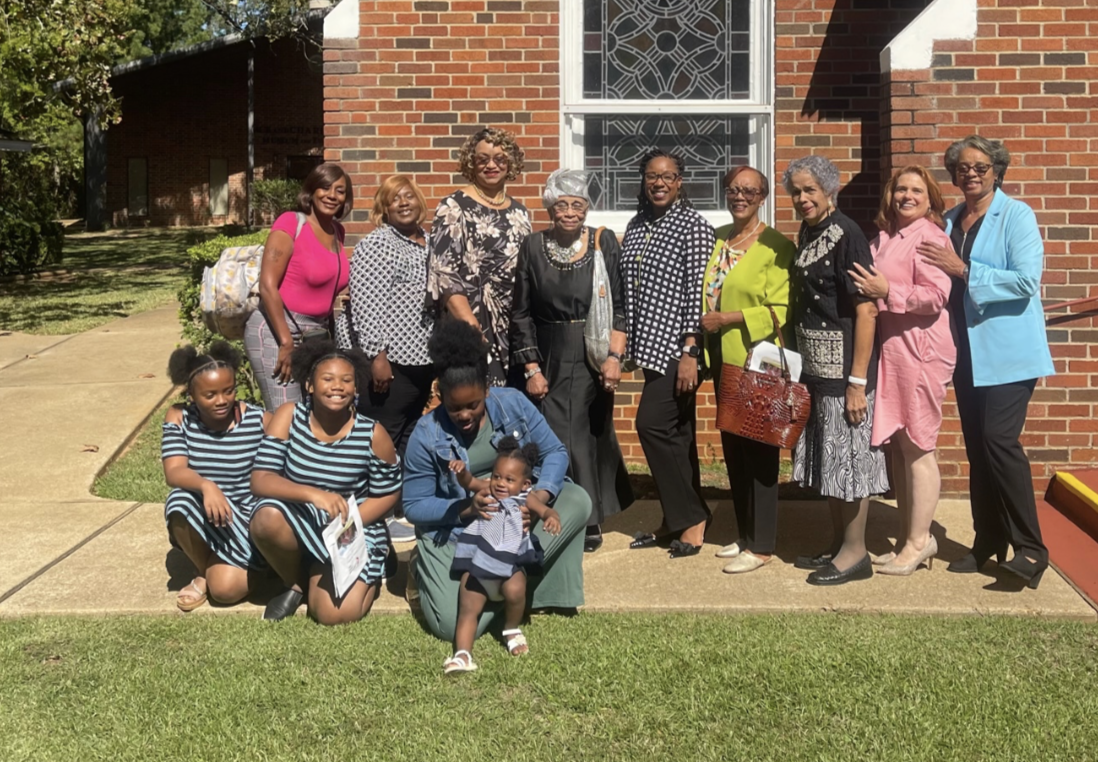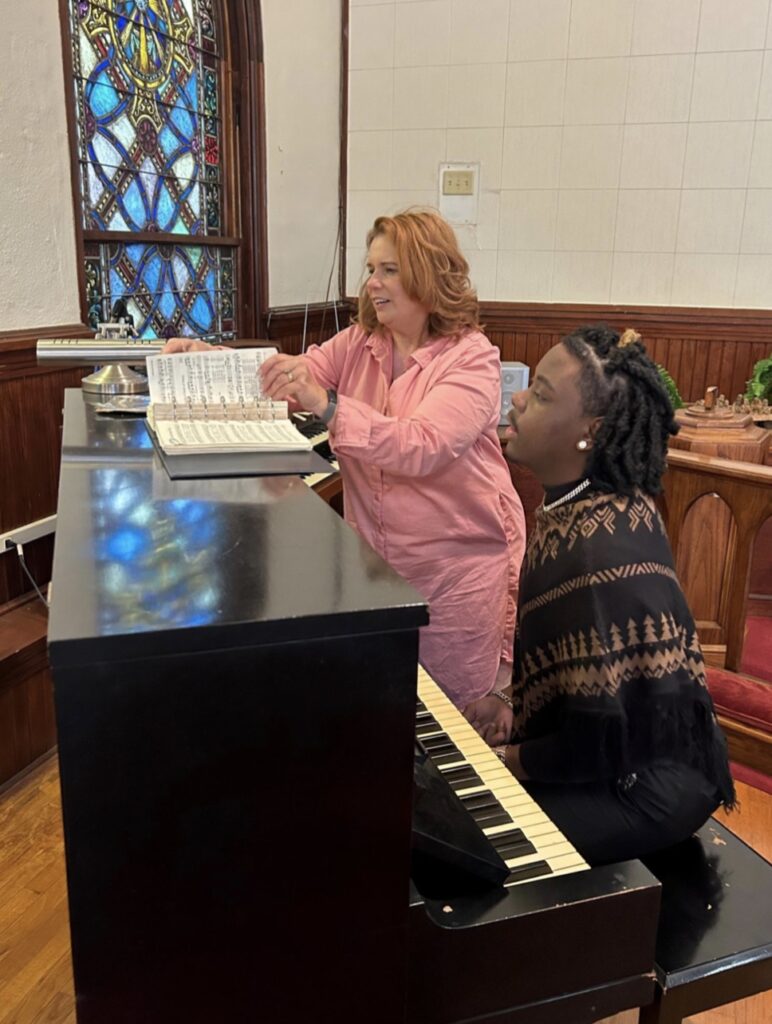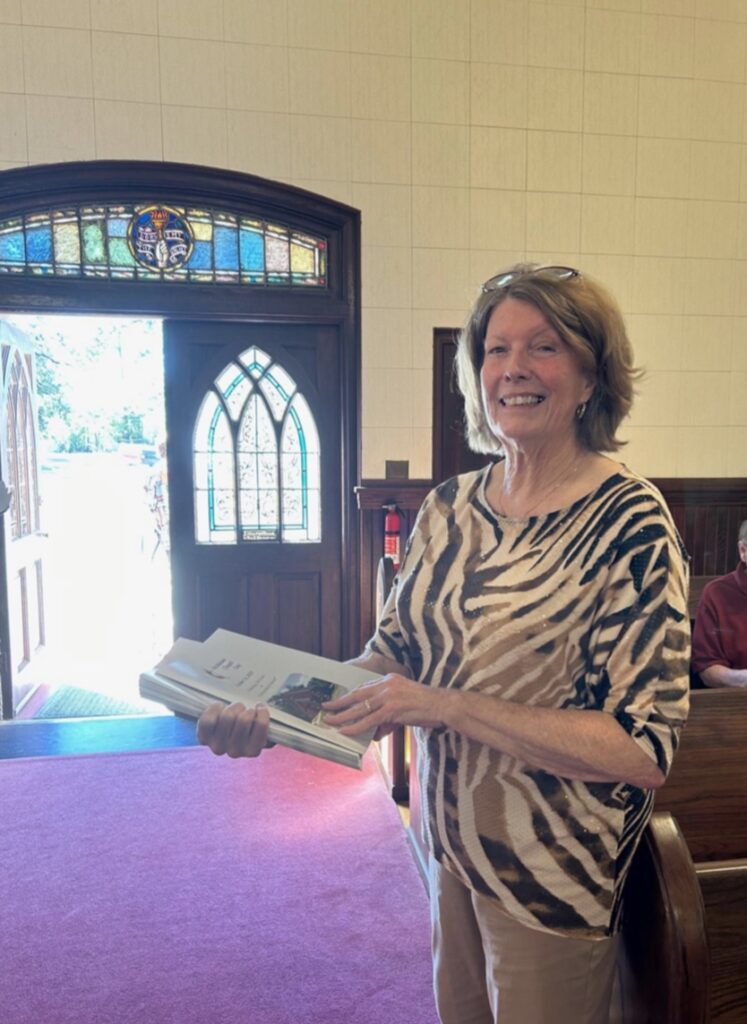
A small church perched in East Texas, not far from the Louisiana border, has a great big history. McMahan Chapel UMC, located in Bronson, is the oldest Protestant church continuously in service in the state. The congregation, which celebrated 190 years of service this month, is moving to a bright future, centered on Kingdom-building, while staying true to its rich history.
Rev. Cindy Doran was appointed to McMahan Chapel last January. She also serves as pastor at Keltys UMC in Lufkin.
McMahan worships at 1:30 p.m. the first, third and fifth Sundays of the month. Before the service, the congregation gathers for lunch.
Pastor Doran makes the 50-minute drive after morning services at Kelty. “It’s so worth it,” she said.
Standing at the helm of the church, Doran said that the church’s incredible history is palpable. “It’s holy ground,” she said.
Still, many still do not know the story behind the congregation. “It’s the most sacred, well-kept secret,” Doran said.

She hopes that changes soon. She already has a curriculum prepared for confirmation retreats. And the church has a museum in its event center – and even an escape room based on United Methodist history.
“You can come experience our history firsthand,” Doran said.
McMahan Chapel Day is held the second Saturday in October to celebrate the congregation’s anniversary. The 190-year milestone this year, on Oct. 14, brought guest speaker Rev. Romonica Malone-Wardley, Assistant to Bishop Cynthia Harvey. Music was performed by Milak Ross.
Earlier in the month, McMahan Chapel Cemetery was designated as a Recorded Texas Historic Landmark by the Texas Historical Commission. Bishop Harvey led a special service on Oct. 1 to commemorate the occasion and later unveiled the marker.
Sharron Mills, administrative chair, is passionate about sharing the church’s story and often leads tours of campus.
In 1831, Colonel Samuel Doak McMahan moved with his family from Tennessee, settling deep into East Texas, in what was then the San Augustine municipality of Mexico. A year later, he was traveling on horseback through the forests along Palo Gaucho Creek, when he had a heartwarming experience.
“He stopped there, knelt down beside his horse and prayed,” Mills said.
At that moment, McMahan vowed to find a Methodist preacher to minister to his family and neighbors. But he faced a major obstacle.
At the time, Texas was still a part of Mexico, a Catholic country. Other denominations were prohibited.
Mills explained that McMahan had to travel to Louisiana to find Rev. James P. Stevenson, who agreed to come to Texas in July 1833.
The minister returned the following September but was too scared to return again. “He told McMahan, ‘I’m not coming back,’” Mills said.
Stevenson was too worried about preaching forbidden Protestant services in Texas. Instead, he formed a Methodist society in McMahan’s log home in 1833, with about 20 charter members.
McMahan was appointed the class leader. In 1837, he was licensed as a local preacher.
The group continued to meet in McMahan’s home until Texas gained independence from Mexico in 1836. At that point, the Methodists were free to openly organize a Protestant church.

That’s when circuit rider Littleton Fowler was sent to town. “He talked them into building a chapel,” Mills said. “The women cut the logs, and the men built it.”
In 1838, Fowler was appointed the presiding elder of the Texas Mission District by the Mississippi Conference. He built a home near McMahan’s place, which became his headquarters, according to the Texas State Historical Association.
“He loved McMahan Chapel so much that he asked that he be buried under the pulpit,” Mills said.
Now the church is in its fourth building. Each structure is constructed to preserve the exact location under the pulpit and to ensure Fowler’s grave is not disturbed. “Behind the pulpit is a huge headstone,” Mills said.
A few years ago, on McMahan Chapel Day, then pastor Rev. Karen Jones decided to open the cornerstone of the building. Mills said that Fowler’s 1838 preaching journal was waiting inside. “It’s in his own handwriting,” she said.
The current brick building was constructed in 1949 and dedicated in 1956. The original log church was replaced with a frame church in 1872, and a third structure in 1900.
A spring bubbles on the campus. Mills said the water source was one factor that attracted McMahan to the property. Now, the congregation collects the water for pastors for Baptisms.
“We used to have it blessed,” Mills said. “Then, one of the Bishops explained that we don’t need to do that anymore, because it’s coming from sacred ground.”
Inside the church’s museum are family Bibles from the McMahans, as well as pocket sized hymnals and Books of Discipline. There are items from the early days of Methodism. A painting of the chapel is on one of the original shingles from the log church.
Mills feels called to shine a light on McMahan Chapel’s history. Raised Baptist, she became a United Methodist after moving to San Augustine and finding a welcoming congregation awaiting at McMahan. “I think God put me here,” she said. “I really do believe it was a God thing.”
A prominent part of the church’s mission is making and keeping its history sacred. “That sums up how we are,” Doran said. “Anything we do, we want it to honor our history, the United Methodist theology and do that in a way to continue to grow the Kingdom and continue to touch lives.”
She is inspired by both the story behind McMahan and also the dedication to preserve its history.
“To me, it’s an honor to be the preacher there, to be entrusted with this kind of history,” Doran said. “It’s something I’m blessed to get to do.”
For more information, visit www.mcmahanchapel.com.
